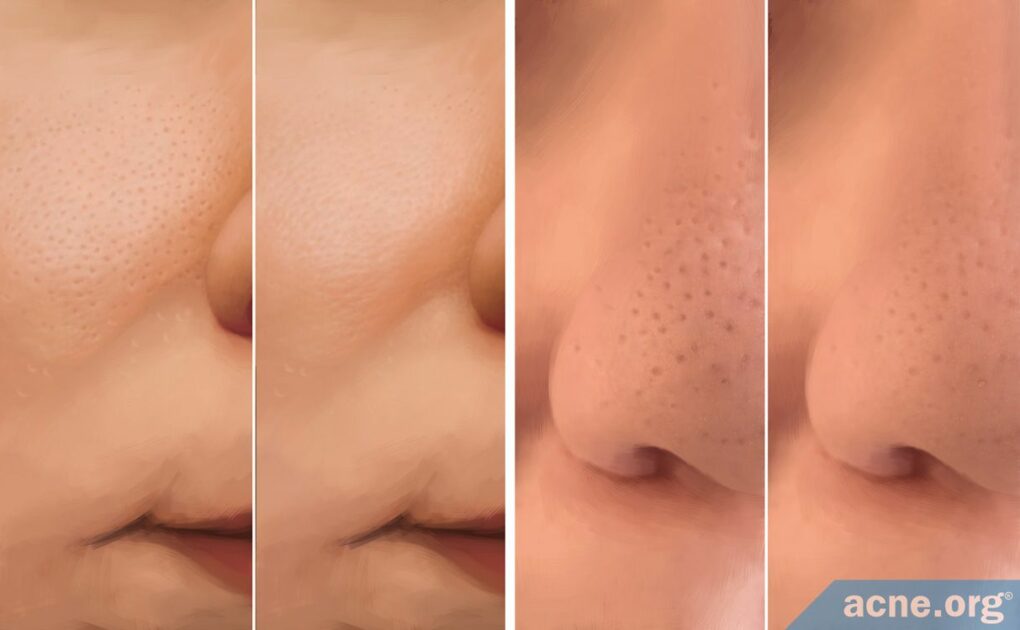Yes. Topical Retinoids (Tretinoin, Adapalane, Tazarotene), Chemical Peels, and Laser Treatments, among Others, Can Decrease Pore Size.

The Essential Info
Enlarged skin pores, while not a medical problem, can worsen the appearance of the skin. For most people, the answer is to simply accept your imperfections. However, if enlarged pores are bothering you, study results show us that pore size can be effectively reduced in various ways.
Treatments for Enlarged Pores (Typically Require Multiple Sessions or Prolonged Use)
The treatment options that research has shown to be at least somewhat effective in reducing pores are:
- Retinoid creams/gels (tretinoin, adapalene, tazarotene)
- Chemical peels
- Oral contraceptives (birth control pills)
- Laser therapy
- Ultrasound therapy
- Hyaluronic acid injections
- Botox® injections
Causes of Enlarged Pores:
The most common causes of enlarged skin pores are:
- Excessive skin oil production. Note: This also leads to acne, which is why we see acne and enlarged pores often go hand in hand.
- Loss of skin elasticity due to age or sun damage.
- Having relatively thick body hair.

The Science
- What Exactly Are Skin Pores?
- How Do You Know If You Have Enlarged Skin Pores?
- Causes of Enlarged Skin Pores
- Treating Enlarged Pores
- The Bottom Line
Enlarged skin pores are a common concern for males and females of all ages and races. Although large skin pores do not pose a health risk, they can make the skin appear rough and uneven. This is why many people are in search of an effective treatment to make skin pores smaller and less visible.
There are currently a few options for reducing skin pores, most of which require multiple sessions or prolonged use:
- Topical retinoid creams (tretinoin, adapalene, tazarotene): Applying prescription retinoid treatments daily for 3-6 months may reduce pore size.
- Chemical peels: Undergoing multiple treatments with a light chemical peel may reduce pore size.
- Oral contraceptives – birth control pills (females only): Taking combined oral contraceptives (COCs) for at least 6 months may reduce skin pore size.
- Laser therapy: Undergoing 3-6 treatments with a fractional laser can significantly reduce pore size.
- Ultrasound therapy: Undergoing a single ultrasound treatment may reduce skin pore size.
- Hyaluronic acid injections: Receiving 2-5 injections of hyaluronic acid may reduce pore size.
- Botox® injections: Botox injections may reduce pore size.1-8
To understand why these treatments help, we first need to understand exactly what skin pores are and why they become enlarged.
What Exactly Are Skin Pores?
Technically, a skin pore is any circular opening in the skin wider than 0.02 mm.9,10 By this definition, a skin pore could mean:
- A skin opening where skin oil and a tiny body hair come out (medically referred to as a pilosebaceous follicle)
- Opening of a sweat gland11,12
In practice, when people talk about enlarged skin pores, they are almost always referring to the first one.
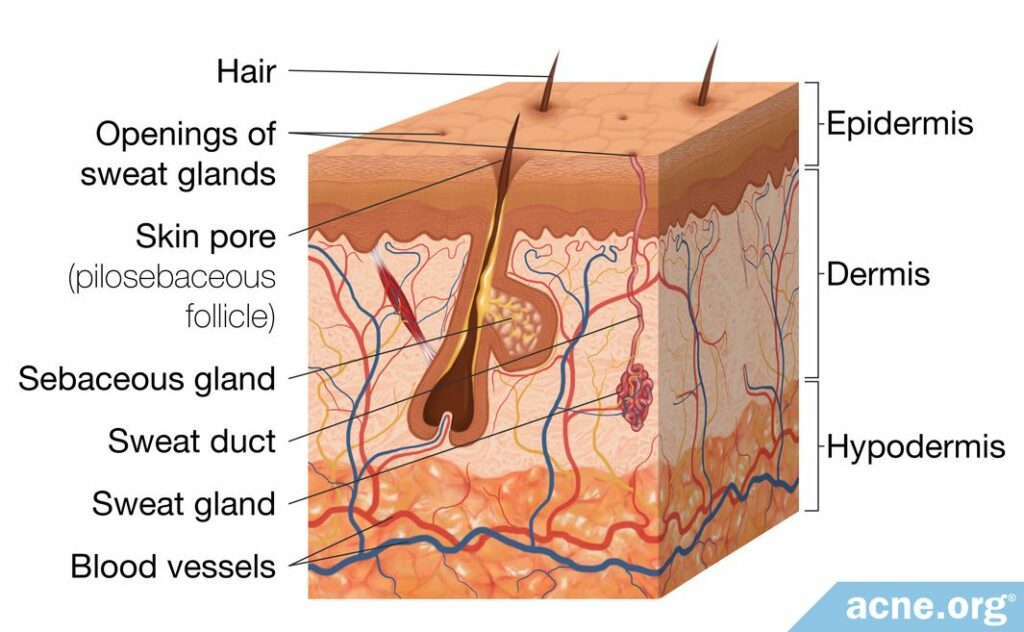
The tiny body hairs are not facial hair or body hair, but are instead the invisible fine downy hairs that cover the whole body except the palms of the hands and soles of the feet.9,13
How Do You Know If You Have Enlarged Skin Pores?
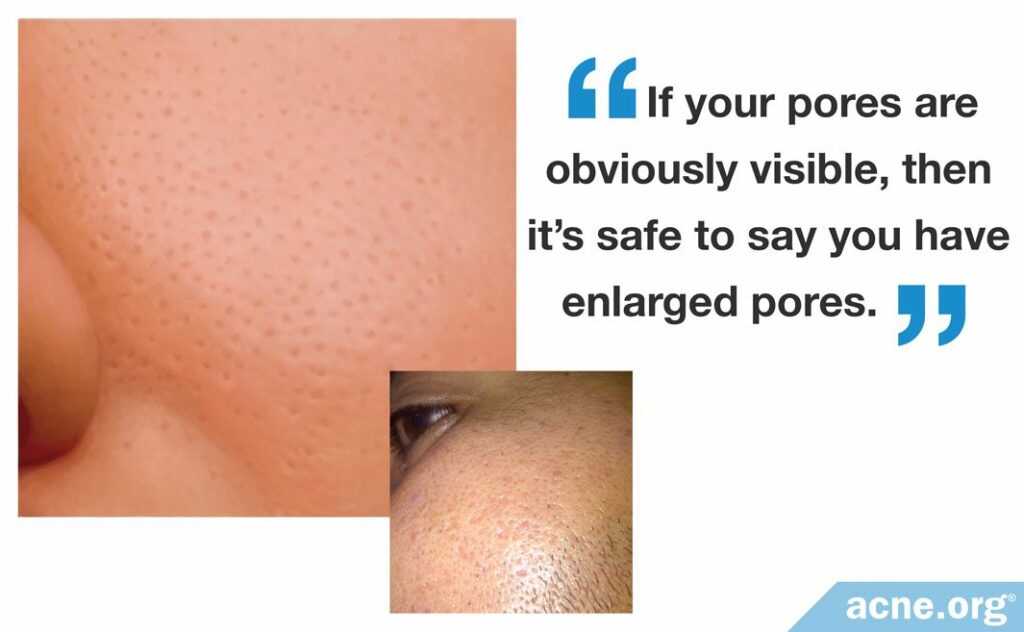
Generally, enlarged pores are pores big enough to be visible to the naked eye. Some researchers have tried to put a number on this, defining enlarged skin pores as pores with an area of 0.3 mm2 or more. For our purposes, if your pores are obviously visible, then it’s safe to say you have enlarged pores.9,14
According to a 2016 article in the medical journal Cutis:
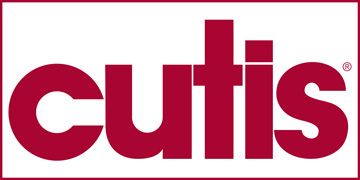
“Enlarged pores are difficult to treat, in part due to lack of knowledge of [how and why they occur].”13
Causes of Enlarged Skin Pores
While researchers do not fully understand what causes enlarged pores, they believe the top three factors that contribute to large pores are:
- High skin oil production: People whose skin produces a lot of skin oil tend to have enlarged pores.
- Loss of skin elasticity (stretch): The skin tends to lose elasticity naturally with age. This process can also speed up due to sun damage. As the skin loses elasticity, skin pores tend to widen.
- Thick body hairs: Everyone’s skin is covered in invisible downy hairs, except for the palms of the hands and soles of the feet. The thicker these downy hairs, the larger and more visible the skin pores that the hairs grow out of.9,13
Although there is no direct connection between enlarged pores and acne, the two do tend to go hand-in-hand. That’s because high skin oil production often leads to acne and, as we have seen, can also cause enlarged skin pores.14
Expand to read studies on the causes of enlarged skin pores
Several studies have tried to look more closely at the causes of enlarged pores.
Pore size increases with age: Two studies have looked for a link between enlarged skin pores and age. The first study looked at 60 volunteers and confirmed the link between high skin oil production and large skin pores. The same study also found that older people tend to have larger pores than younger people, and that women tend to experience enlarged pores during ovulation.15 The second study confirmed that pores widen with age, and found that the number of enlarged pores increases significantly between the 30s and 40s for both men and women.16

The study was published in 2006 in the journal Cutaneous Biology. Sixty volunteers, including 30 men and 30 women between the ages of 20 and 40, participated in the study. The researchers found a strong relationship between increased skin oil production and enlarged pores. In addition, the authors found that pore size increases with age, likely due to a loss of collagen and elastin (proteins that make the skin firm and stretchy).
The researchers also noted that although men tend to produce more skin oil, women are more likely to experience enlarged pores. In women, skin oil production fluctuates due to hormonal changes during the menstrual cycle, so they tend to experience enlarged pores during ovulation.15

The second study was published in the journal Skin Research and Technology in 2018. The researchers analyzed contrast-enhanced photographs of the noses, foreheads, and cheeks of 434 people. They found that the number of enlarged pores increases with age, with a particularly large increase between the 30s and 40s. However, the researchers found no difference in the number of enlarged pores between men and women.16
Ethnicity may be an important factor that determines pore size: Two studies have looked at pore size across different ethnicities. The first study found that people of Asian background tend to have significantly smaller pores compared to other ethnicities, whereas people of African descent tend to have larger pores.17 The second study only looked at women, finding the smallest pores in Chinese women and the largest pores in Brazilian women.18 However, few studies have looked into this topic, so it is too early to draw any firm conclusions.

The first study was published in 2009 in the Journal of Dermatological Science. The researchers compared pore size and density (how closely pores are packed together) in people of Caucasian, Asian, Hispanic, and African descent. They found the lowest pore size and density in people of Asian background.17
The researchers also looked at the structure of the skin around pores in each ethnic group. They found that people of African background, who tended to have larger pores, also had slightly different internal skin structure around the pores. In other words, inborn differences in skin structure may make people of some ethnicities more prone to developing enlarged pores than others.17
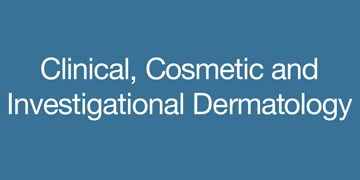
The second study was published in 2015 in the journal Clinical, Cosmetic and Investigational Dermatology. A total of 2,585 Chinese, Caucasian, Japanese, Brazilian, and Indian women participated in the study. The researchers found that pore size varies much more with ethnicity than with age. In other words, ethnicity may be a much stronger determining factor in how large a woman’s pores are than her age. The study authors found the smallest pores, measuring 0.05 mm2, in Chinese women and the largest pores, measuring 0.37 mm2, in Brazilian women. The researchers wrote, “the most extreme average values…[were in] Chinese (0.05 mm2) and Brazilian (0.37 mm2) women, with a sevenfold variation in size.”18
Treating Enlarged Pores
To successfully reduce enlarged pores, the key is to identify the cause of the condition in each particular case. For example, for a person whose pores are enlarged because of excessive skin oil production, treatment might focus on reducing skin oil production with topical retinoids (tretinoin, adapalene, tazarotene), hormonal therapy, chemical peels, or Botox® injections. On the other hand, for someone whose enlarged pores are due mainly to decreased skin elasticity, laser therapy, ultrasound therapy, or hyaluronic acid injections may be better options.9
Most of the research we have on treatments for enlarged pores comes from studies investigating treatments for wrinkles, skin pigmentation, and other signs of skin aging where the researchers noticed that some of these treatments also reduced skin pores as a bonus.
Let’s take a look.
Topical retinoids (tretinoin, adapalene, tazarotene)
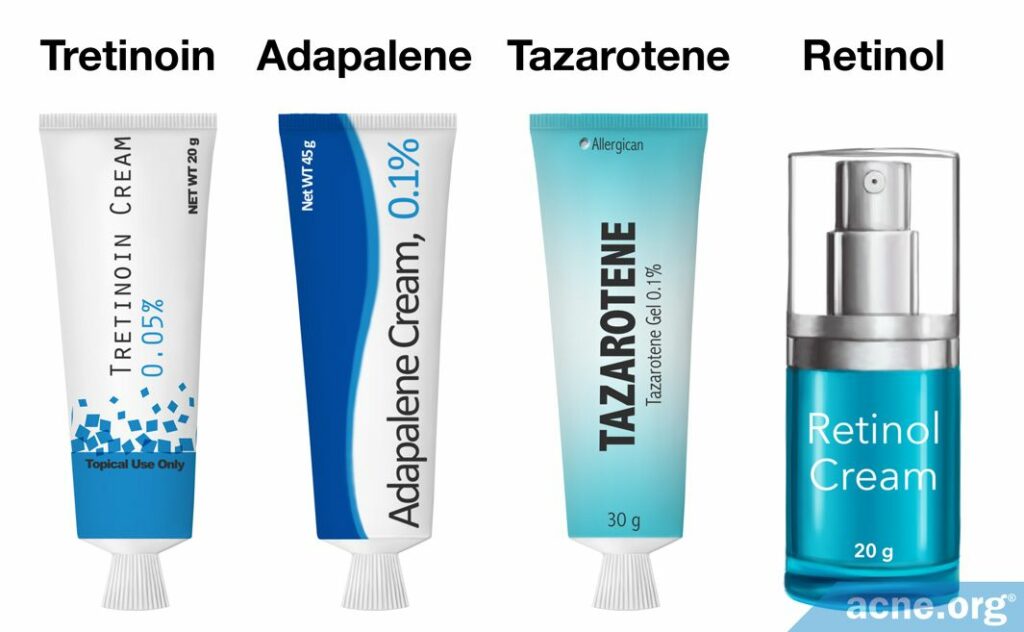
Tetinoin, adapalene, and tazarotene are commonly prescribed topical medications that help treat both acne and wrinkles. Two studies have found that applying topical retinoids to the skin also caused a modest reduction in pore size.
In the first study, over 500 patients with enlarged pores applied a tazarotene cream to the skin daily for 6 months. At the end of this period, 42% of the patients showed at least some improvement in pore size.1,13
Expand to reveal details of study

The study was published in 2005 in the Journal of the American Academy of Dermatology. A total of 568 patients used a 0.1% tazarotene cream once daily for 24 weeks. A physician scored the sizes of the patients’ pores on a 5-point scale at the beginning and end of the study, with 0 corresponding to barely visible pores and 4 corresponding to large pores. The researchers found that at week 24, the pores in 42% of patients had decreased by at least one point. In other words, if someone’s pores had started out as a 4 (large), they became a 3 (medium) or smaller.
In addition, some patients in the study applied a placebo cream–a cream that looked like the tazarotene cream but contained no medicinal ingredients. At the end of 24 weeks, 20% of these patients also experienced a reduction in pore size by at least 1 point. In other words, the cream with no medicinal ingredients also helped 20% of patients, perhaps because of the placebo effect (a psychological effect in which believing that a treatment will work actually produces improvement in symptoms). However, the tazarotene cream did help more patients than the placebo cream–42% compared to 20%.1
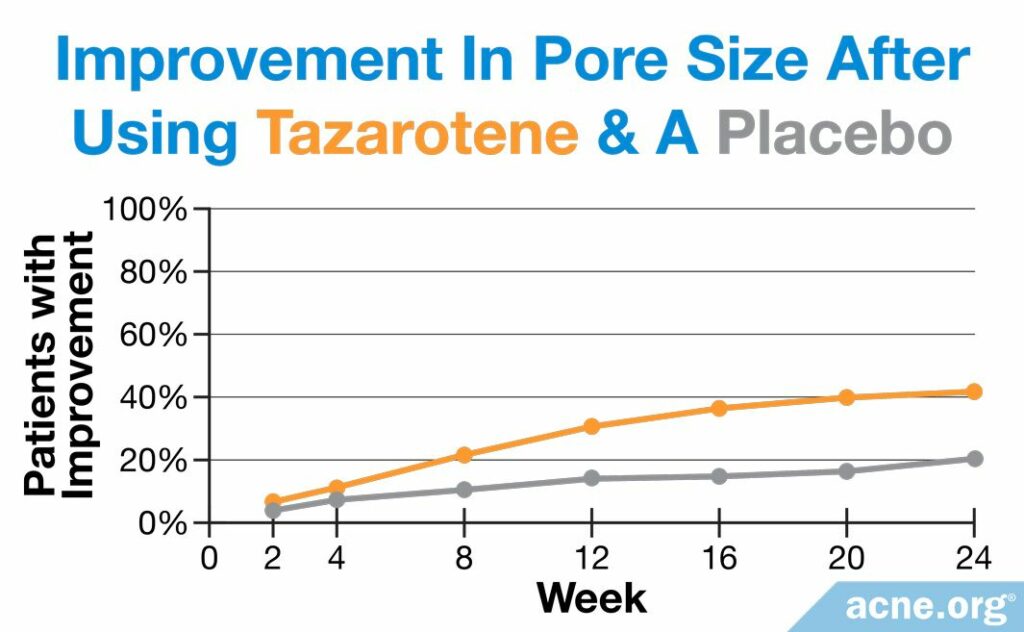
The second, smaller study compared tretinoin to an over-the counter retinoid called retinol. In this study, 60 women applied the prescription cream and 60 other women applied the over-the-counter cream to their skin every day for 90 days. At the end of the study, the women’s pores were, on average, about 38% smaller. Interestingly, the over-the-counter retinol worked just as well as the prescription tretinoin, suggesting that over-the-counter retinol creams could be worth trying for enlarged pores.2
Expand to reveal details of study

The study was published in the Journal of Cosmetic Dermatology in 2015. The researchers wanted to study the anti-aging effects of retinoid creams and, as a bonus, also looked at how well the creams reduced enlarged pores. They found that after 90 days of applying 0.025% tretinoin cream once a day, women’s pore size decreased from an average score of 3.2 to a score of 2.0, which means the pores were approximately 38% smaller. The women who applied over-the-counter retinol cream instead experienced slightly less improvement, but the difference was so small that it was not statistically significant. In other words, based on the results of this study, the researchers had to conclude that tretinoin and retinol cream work equally well for reducing enlarged pores.2
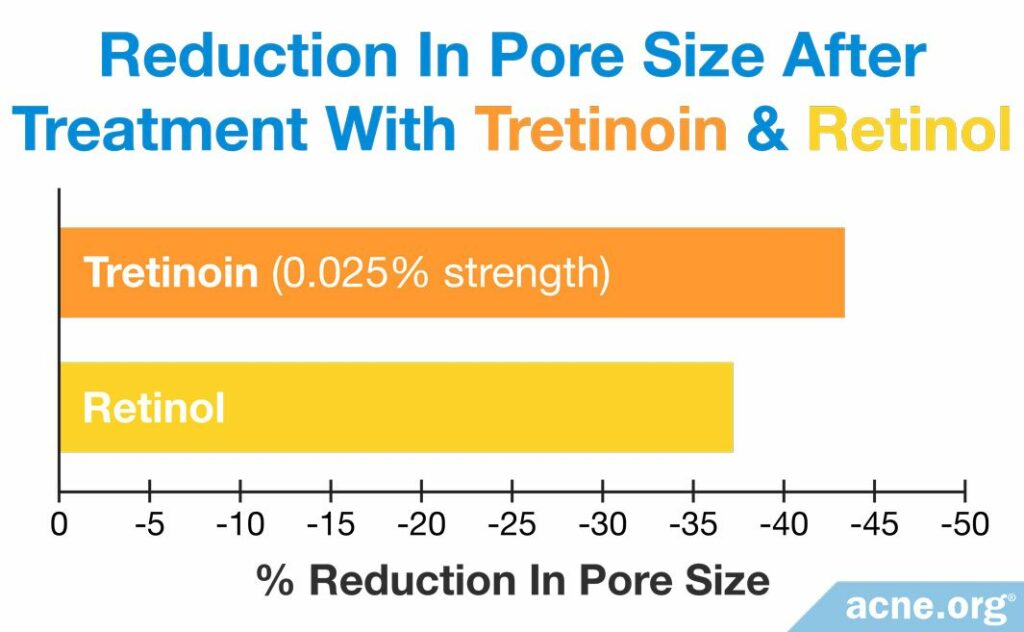
Chemical peels
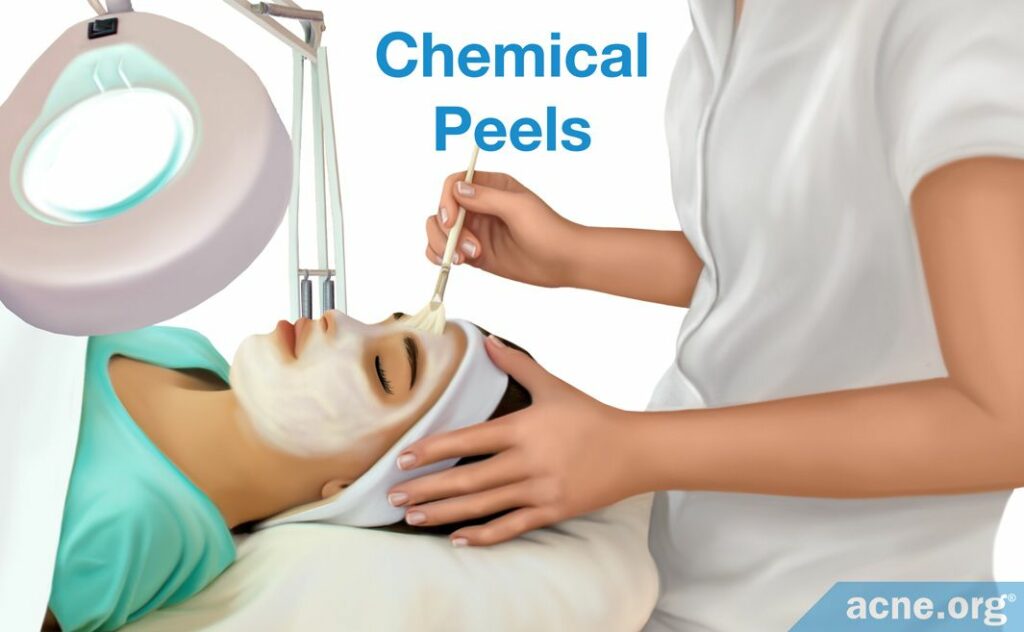
One study found that chemical peels can also help to reduce enlarged pores. A light glycolic acid peel performed 5 times reduced visible pores in most of the 22 women in the study by about one-third.3
Expand to reveal details of study

The study was published in the journal Skin Research and Technology in 2011. The researchers treated 22 Japanese women with enlarged skin pores with light chemical peels consisting of a 30% glycolic acid solution. The women received a chemical peel every 2 weeks for a total of 5 treatments. At the end of the study, 19 of the 22 women experienced a reduction in visible pores by about 34.6% on average.3
Oral contraceptives – birth control pills (females only)
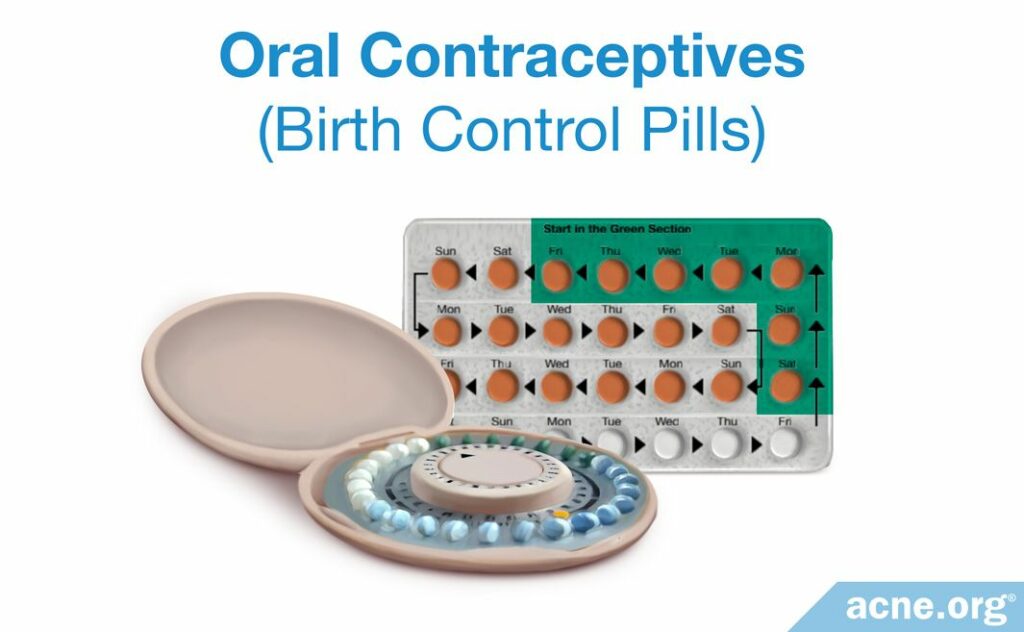
The most common oral treatment for enlarged skin pores is oral contraceptives, often known simply as birth control pills. Oral contraceptives act as anti-androgens: they reduce the levels of male hormones that women have in the body. Since male hormones tend to promote skin oil production, oral contraceptives can reduce skin oil production. As we have seen, high skin oil production tends to go along with enlarged pores, so it makes sense that birth control pills that decrease skin oil production may reduce the size of pores as well.
One study found that, out of 19 women who started the study with enlarged skin pores, 15 women no longer had enlarged pores after taking oral contraceptives for 6 months.4
Expand to reveal details of study

The study was published in the journal Clinical Drug Investigation in 2008. The researchers treated 44 women with acne-prone skin with combined oral contraceptives containing chlormadinone acetate and ethinyl estradiol. The women took the pills for 6 menstrual cycles. The researchers compared photographs of the women’s skin before and after treatment. They found that, while 43.2% of the women complained of enlarged pores at the beginning of the study, only 9.1% of the women still had enlarged pores at the end of the study. The scientists concluded that oral contraceptives can be effective in reducing enlarged pores.4
Laser therapy
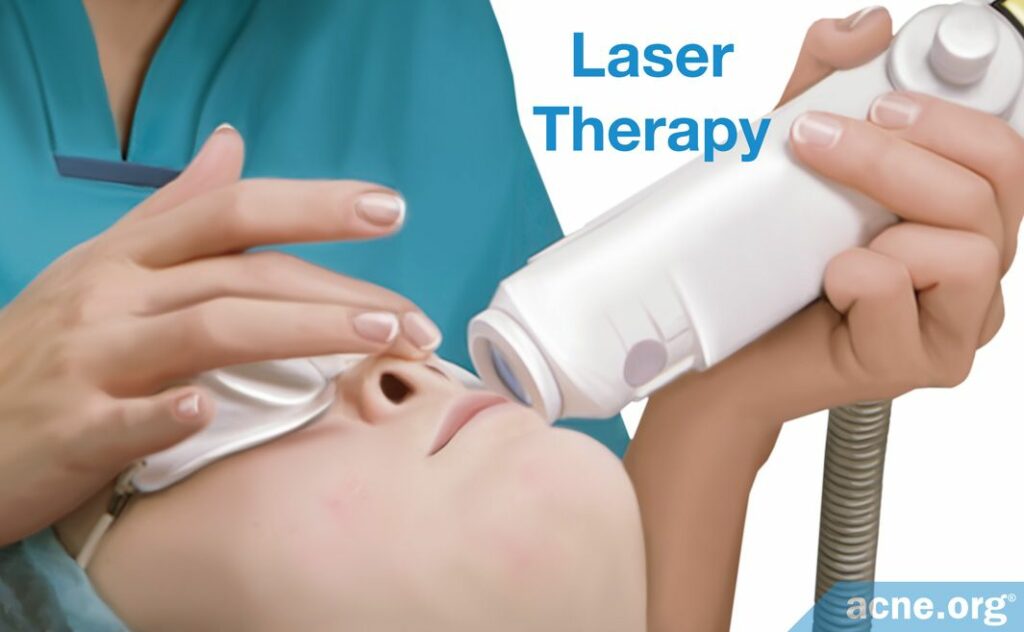
For enlarged pores caused by a loss of skin elasticity, laser therapy can help. Laser treatment stimulates the formation of new collagen fibers in the skin. Collagen is one of the key proteins that keeps the skin firm and youthful.
Two studies have found that 3-6 laser treatments can reduce the size of enlarged pores. In the first study, three sessions of laser therapy decreased pore size by half in 14 out of 15 participants.5
Expand to reveal details of study

The study was published in the journal Lasers in Medical Science in 2015. The researchers treated 15 patients with enlarged pores with three sessions of laser therapy at 3-week intervals. The type of laser was 1410-nm fractionated erbium-doped fiber laser. After three treatments, pore size decreased by 51% in 14 out of 15 participants.5
In the second study, six sessions of laser therapy decreased pore size in 20 patients by about 17%.6 The researchers wrote, “A series of treatments with the…laser appears to be safe and effective for reducing detectable pores and improving overall skin appearance.”6
Expand to reveal details of study

The study was published in the Journal of the American Academy of Dermatology in 2013. The researchers treated 20 patients with enlarged pores with six sessions of laser therapy over a 2-week period. The type of laser was 1410-nm diode fractional laser. Software analysis showed a 17% average improvement in facial pore size.6
Ultrasound therapy
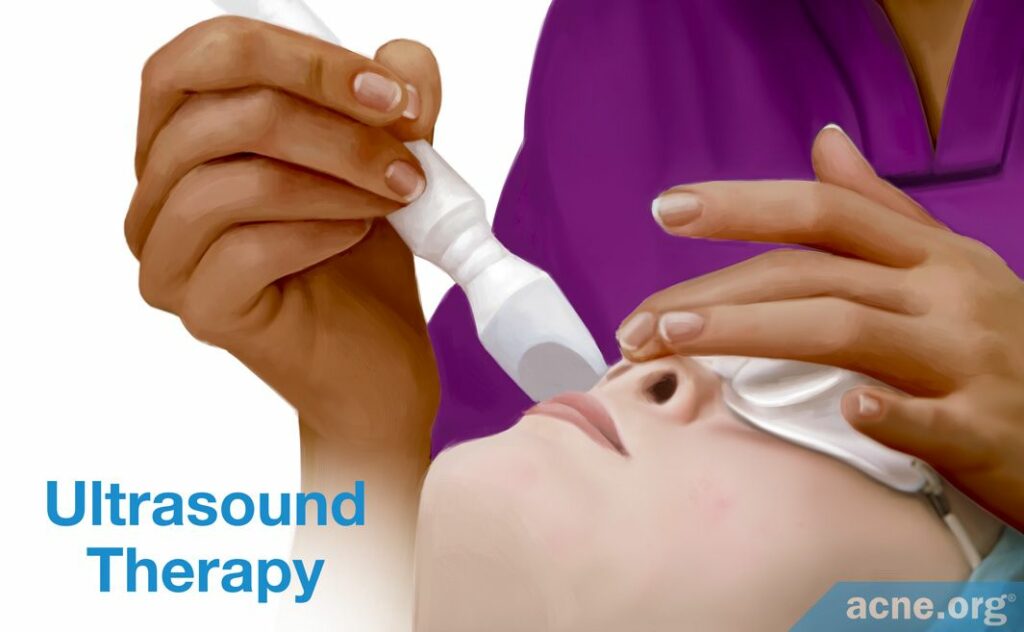
Like laser therapy, ultrasound therapy can stimulate the formation of new collagen fibers and thus help with enlarged pores caused by a loss of skin elasticity. For example, one study in Asian patients found that a single ultrasound treatment can improve pore size by 86-91%.7
Expand to reveal details of study

The study was published in the Journal of Dermatological Treatment in 2013. The researchers treated 22 Asian patients with a single session of ultrasound therapy. Some patients received treatment with a 1.5-mm transducer and some with a 3.0-mm transducer. Doctors evaluated pore size in patient photos before and after treatment without knowing which photos were which, making the evaluation “blind.” They found an 86% improvement in pore size after treatment with the 1.5-mm transducer and a 91% improvement after treatment with the 3.0-mm transducer. The researchers also noted that skin elasticity improved along with pore size, which supports the idea that ultrasound treatment boosts skin elasticity.7
Hyaluronic acid injections
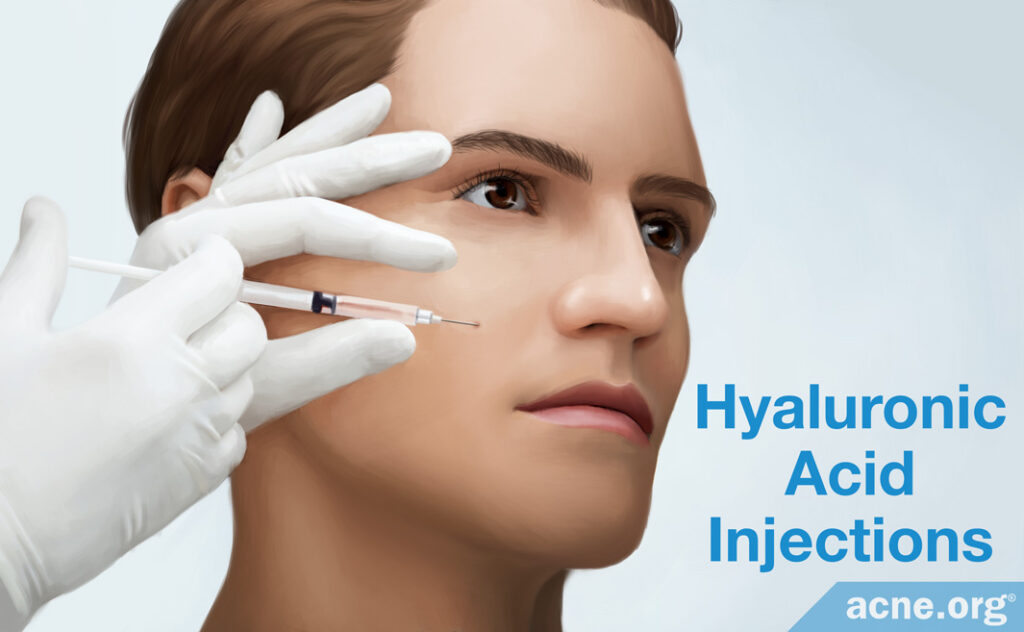
Another option for treating enlarged pores is injection of hyaluronic acid into the skin across the whole face. Hyaluronic acid is naturally found in the skin and helps to keep the skin moist and smooth.
One study treated patients with enlarged pores with 2-5 injections of hyaluronic acid. At the end of the study, the patients experienced a 40% improvement in pore size, on average.8
Expand to reveal details of study

The study was published in the Journal of Cosmetic Dermatology in 2017. The researchers treated 42 patients with injections of low molecular weight hyaluronic acid into the skin in order to reduce pore size, improve skin texture, and increase skin radiance. Patients received 2-5 injections within a period of 1 to 1.5 weeks. The patients experienced, on average, a 40% reduction in pore size. In addition, 92.8% of patients were satisfied with the treatment.8
Botox® injections
A relatively new option for reducing pore size and skin oil production is injection of Botox® (botulinum toxin).
One review looked at all published research on the topic of Botox® injections for oily skin and enlarged pores. Most studies had found Botox® injections effective at reducing both skin oil production and pore size. The review authors wrote, “Further study is still needed to determine the specific mechanisms of [Botox®] and the optimal injection techniques and doses for oily skin and other relevant cosmetic concerns.”19
Expand to reveal details of review

This review was published in the Journal of Cosmetic Dermatology in 2019. The researchers combed through 52 previously published studies on Botox® injections for oily skin and enlarged pores. They wrote, “Most studies have suggested that the intradermal injection of [Botox®] decreased [skin oil] production and pore size. Furthermore, this treatment attained high patient satisfaction without significant side effects.”19
The Bottom Line
Enlarged skin pores can occur in people of all ages and ethnic backgrounds. The most common causes of large pores are high skin oil production, decreased skin elasticity due to aging and/or sun damage, and the presence of relatively thick body hairs. Depending on the underlying cause, enlarged pores can be improved with treatments such as topical retinoids, chemical peels, oral contraceptives, laser therapy, ultrasound therapy, hyaluronic acid injections, and/or Botox® injections.
References
- Kang, S., Krueger, G.G., Tanghetti, E.A., Lew-Kaya, D., Sefton, J., Walker, P.S. & Gibson, J.R. Tazarotene Cream in Photodamage Study Group. A multicenter, randomized, double-blind trial of tazarotene 0.1% cream in the treatment of photodamage. J Am Acad Dermatol. 52(2):268-74 (2005). https://www.ncbi.nlm.nih.gov/pubmed/15692472
- Bouloc, A., Vergnanini, A.L. & Issa, M.C. A double-blind randomized study comparing the association of Retinol and LR2412 with tretinoin 0.025% in photoaged skin. J Cosmet Dermatol. 14(1):40-6 (2015). https://www.ncbi.nlm.nih.gov/pubmed/25603890
- Kakudo, N., Kushida, S., Tanaka, N., Minakata, T., Suzuki, K. & Kusumoto, K. A novel method to measure conspicuous facial pores using computer analysis of digital-camera-captured images: the effect of glycolic acid chemical peeling. Skin Res Technol. 17(4):427-33 (2011) https://www.ncbi.nlm.nih.gov/pubmed/21342294
- Kerscher, M., Reuther, T., Bayrhammer, J. & Schramm, G. Effects of an oral contraceptive containing chlormadinone and ethinylestradiol on acne-prone skin of women of different age groups: an open-label, single-centre, phase IV study. Clin Drug Investig. 28(11):703-11 (2008). https://www.ncbi.nlm.nih.gov/pubmed/18840013
- Suh, D.H., Chang, K.Y., Lee, S.J., Song, K.Y., Choi, J.H., Shin, M.K. & Jeong, K.H. Treatment of dilated pores with 1410-nm fractional erbium-doped fiber laser. Lasers Med Sci. 30(3):1135-9 (2015). https://www.ncbi.nlm.nih.gov/pubmed/25647394
- Saedi, N., Petrell, K., Arndt, K. & Dover, J. Evaluating facial pores and skin texture after low-energy nonablative fractional 1440-nm laser treatments. J Am Acad Dermatol. 68(1):113-8 (2013). https://www.ncbi.nlm.nih.gov/pubmed/23098639
- Lee, H.J., Lee, K.R., Park, J.Y., Yoon, M.S. & Lee, S.E. The efficacy and safety of intense focused ultrasound in the treatment of enlarged facial pores in Asian skin. J Dermatolog Treat. Feb;26(1):73-7 (2015). https://www.ncbi.nlm.nih.gov/pubmed/24512647
- Qian, W., Zhang, Y.K., Hou, Y., Lyu, W., Cao, Q., Li, Y.Q. & Fan, J.F. Effect analysis of intradermal hyaluronic acid injection to treat enlarged facial pores. J Cosmet Dermatol. 17(4):596-599 (2018). https://www.ncbi.nlm.nih.gov/pubmed/28786543
- Lee, S.J., Seok, J., Jeong, S.Y., Park, K.Y., Li, K. & Seo, S.J. Facial Pores: Definition, Causes, and Treatment Options. Dermatol Surg. 42(3):277-85 (2016). https://www.ncbi.nlm.nih.gov/pubmed/26918966
- Sugiyama-Nakagiri, Y., Sugata, K., Iwamura, M., Ohuchi, A. & Kitahara, T. Age-related changes in the epidermal architecture around facial pores. J Dermatol Sci. 50(2):151-4 (2008). https://www.ncbi.nlm.nih.gov/pubmed/18249096
- Pore. Wikipedia. Available at: https://en.wikipedia.org/wiki/Pore
- Sweat gland. Available at: https://en.wikipedia.org/wiki/Sweat_gland
- Dong, J., Lanoue, J. & Goldenberg, G. Enlarged facial pores: an update on treatments. Cutis. 98(1):33-6 (2016). https://www.ncbi.nlm.nih.gov/pubmed/27529707
- Kim, B.Y., Choi, J.W., Park, K.C. & Youn, S.W. Sebum, acne, skin elasticity, and gender difference – which is the major influencing factor for facial pores? Skin Res Technol. 19(1):e45-53 (2013). https://www.ncbi.nlm.nih.gov/pubmed/22211382
- Roh, M., Han, M., Kim, D. & Chung, K. Sebum output as a factor contributing to the size of facial pores. Br J Dermatol. 155(5):890-4 (2006). https://www.ncbi.nlm.nih.gov/pubmed/17034515
- Jung, H. J., Ahn, J. Y., Lee, J. I., Bae, J. Y., Kim, H. L., Suh, H. Y., Youn, J. I. & Park, M.Y. Analysis of the number of enlarged pores according to site, age, and sex. Skin Res Technol. 24(3):367-370 (2018). https://www.ncbi.nlm.nih.gov/pubmed/29393550
- Sugiyama-Nakagiri, Y., Sugata, K., Hachiya, A., Osanai, O., Ohuchi, A. & Kitahara, T. Ethnic differences in the structural properties of facial skin. J Dermatol Sci. 53(2):135-9 (2009). https://www.ncbi.nlm.nih.gov/pubmed/18990545
- Flament, F., Francois, G., Qiu, H., Ye, C., Hanaya, T., Batisse, D., Cointereau-Chardon, S., Seixas, M. D., Dal Belo, S. E. & Bazin, R. Facial skin pores: a multiethnic study. Clin Cosmet Investig Dermatol. 16(8):85-93 (2015). https://www.ncbi.nlm.nih.gov/pubmed/25733918
- Shuo, L., Ting, Y., KeLun, W., Rui, Z., Rui, Z & Hang, W. Efficacy and possible mechanisms of botulinum toxin treatment of oily skin. J Cosmet Dermatol. 18(2):451-457 (2019). https://www.ncbi.nlm.nih.gov/pubmed/30697928
